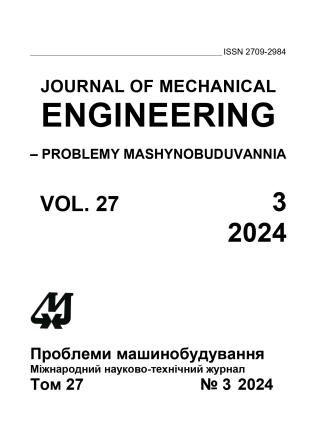Effect of Blade Material of Steam Turbine Rotor on Aeroelastic Characteristics
Abstract
Elements of powerful steam turbines are subjected to significant unsteady loads, in particular the rotor blades of the last stages. These loads, in some cases, can cause self-excited oscillations, which are extremely dangerous and have a negative impact on the efficiency and service life of the blade cascade. Therefore, when designing new or modernizing existing steam turbine stages, it is recommended to study the aeroelastic characteristics of the blades. The conditions for the occurrence of self-excited oscillations are influenced by both the geometric characteristics and the alloy from which the blade is made. To determine the effect of the blade material on the aeroelastic behaviour, a numerical analysis of the aeroelastic characteristics of the last stage blades made of steel and titanium alloy was performed. For the analysis, the method of simultaneous modeling of unsteady gas flow through the blade cascades and elastic vibrations of the blades (coupled problem) was used, which allows obtaining the amplitude-frequency spectrum of the interaction of unsteady loads and blade vibrations. The paper presents the results of numerical analysis for harmonic oscillations with a given amplitude and a given inter-blade phase angle, as well as for the regime of coupled vibration of blades under the action of unsteady aerodynamic forces. The dependences of the aerodamping coefficient on the inter-blade phase angle and the distribution of the coefficient along the blade are presented. The results of modeling the coupled vibration of the blades for the first six natural forms are presented in the form of a time-evolving displacement of the blade peripheral section, as well as forces and moments acting on the peripheral section. The corresponding amplitude-frequency spectra of displacements and loads in the peripheral section are also presented. The analysis of the results showed an insignificant difference in the characteristics of the proposed blade materials. For the first natural form of blade oscillations, the possibility of self-excited oscillations was found, and for the second form, there are conditions for the appearance of stable self-oscillations.
Downloads
Published
Issue
Section
License
Copyright (c) 2024 Ю. А. Биков, Л. В. Колодяжна

This work is licensed under a Creative Commons Attribution-NoDerivatives 4.0 International License.
All authors agree with the following conditions:
- The authors reserve the right to claim authorship of their work and transfer to the journal the right of first publication of the work under the license agreement (the agreement).
- Authors have a right to conclude independently additional agreement on non-exclusive spreading the work in the form in which it was published by the jpurnal (for example, to place the work in institution repository or to publish as a part of a monograph), providing a link to the first publication of the work in this journal.
- Journal policy allows authors to place the manuscript in the Internet (for example, in the institution repository or on a personal web sites) both before its submission to the editorial board and during its editorial processing, as this ensures the productive scientific discussion and impact positively on the efficiency and dynamics of citation of published work (see The Effect of Open Access).

